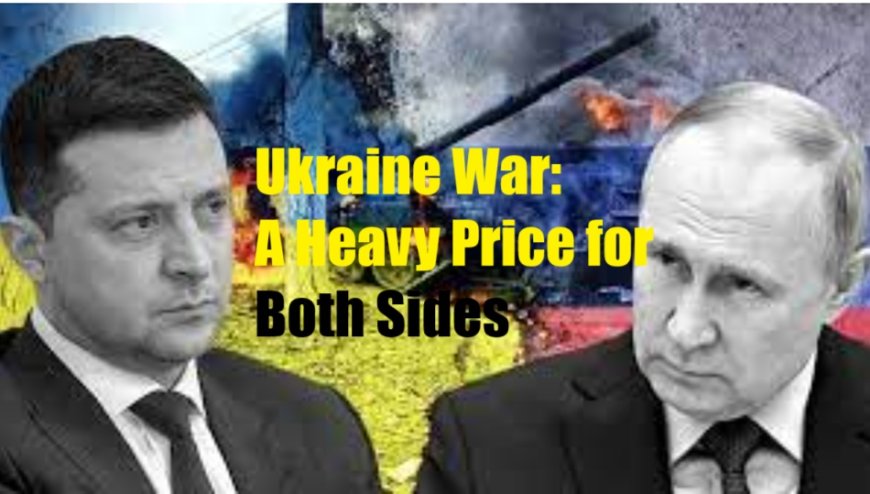Ukraine War: A Heavy Price for Both Sides
As the Ukraine war enters its third year, Russia and Ukraine face immense human, economic, and environmental costs. The upcoming Trump-Putin Alaska summit could shape the path toward ending the conflict.

Ukraine War: A Heavy Price for Both Sides
YEREL GÜNDEM / ALASKA
Alaska Summit Set to Weigh the Cost of War
On August 15, 2025, the much-anticipated Trump-Putin meeting in Alaska will mark the first large-scale diplomatic effort to discuss ending the Ukraine war. As the conflict enters its third year, both Russia and Ukraine face devastating human, economic, and environmental costs. The summit will not only address possible pathways to peace but also confront the heavy toll already paid.
Russia: Short-Term Resilience, Long-Term Decline
Russia has endured the most severe human losses in the conflict. As of June 2025, CSIS data indicates over 950,000 total military casualties, including 250,000 fatalities. Ukraine’s Ministry of Finance estimates the number surpasses one million. These losses have left a deep demographic scar, with long-term implications for the country’s labor force and military capacity.
Since 2022, approximately one million skilled Russians—mostly aged between 20 and 40—have left the country. The exodus has created a 400,000-worker gap in key sectors like technology and defense manufacturing. Militarily, Russia has lost more than 11,000 tanks, 23,000 armored vehicles, and over 50,000 drones, forcing reliance on outdated Soviet-era equipment.
Economically, growth slowed from 4.1% in 2024 to a projected 1.8% in 2025. The budget deficit stands at $61.4 billion, with defense consuming 41% of total expenditure. Oil and gas revenues have dropped by 18.5%, and Western sanctions continue to restrict technology access and foreign investment.
Ukraine: Survival Amid Destruction and Dependence
Ukraine’s civilian population has borne the brunt of the war. Since the start of the full-scale invasion, 13,580 civilian deaths have been confirmed, though the actual number is likely much higher. The war has displaced 3.7 million people internally, while 6.9 million live abroad as refugees—amounting to 21% of the pre-war population.
The cost of rebuilding is estimated at $524 billion. The country has lost 64% of its energy capacity and 80% of its thermal power production, making the winter of 2024–2025 one of the most challenging in its history.
Economically, Ukraine contracted by 30% in 2022 but saw modest growth of 2.9% in 2024. For 2025, the budget deficit is expected to reach 19.3% of GDP. The hryvnia has depreciated by 27% since the war began, and Ukraine’s recovery depends heavily on external assistance. Environmental damages exceed €108 billion, with 30% of farmland now mined.
Comparing the Costs: Who Pays More?
In absolute numbers, Russia has suffered far greater military losses, while Ukraine has endured the most severe civilian and infrastructure damage. Russia’s economy appears more resilient in the short term but faces long-term unsustainability, whereas Ukraine’s survival hinges on Western aid. Socially, Russia struggles with brain drain, and Ukraine faces a massive refugee crisis. Militarily, Russia’s reliance on aging stockpiles contrasts with Ukraine’s integration of modern Western systems.
The Road to Alaska
With Trump regaining political momentum in the United States and Putin under increasing pressure at home and on the battlefield, the Alaska talks may be pivotal. Beyond discussions on ending the war, the leaders will face the stark reality of a conflict that has reshaped both nations—and the region—for decades to come.
#Etiketler:
#Ukraine #Russia #AlaskaSummit #Trump #Putin #WarCost #Economy #MilitaryLoss





















